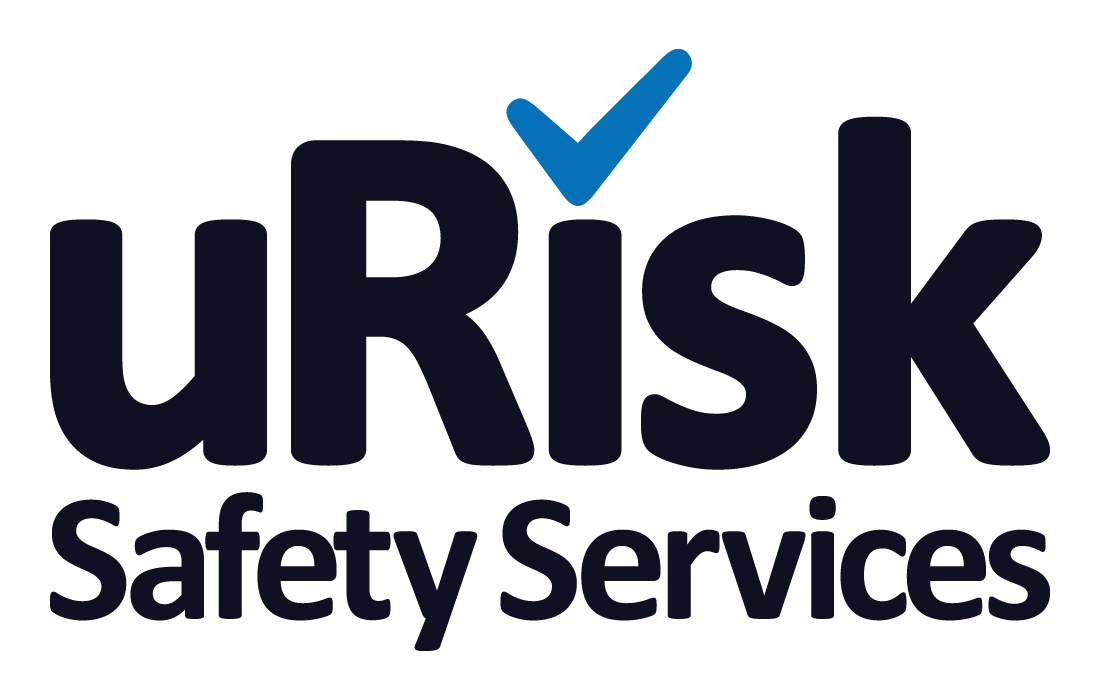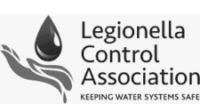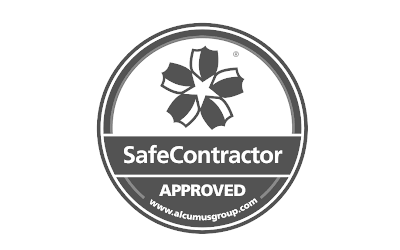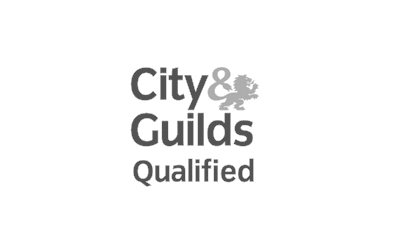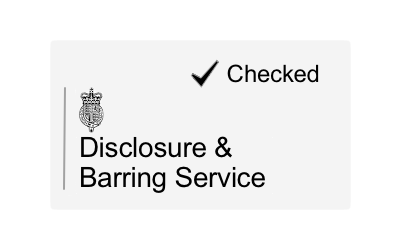Legionella In Care Homes
As with all businesses, care homes and nursing homes have a duty of care with regard to the health and safety of their residents, staff and visitors. Particular attention must be given to residents of care homes and nursing homes, who are more likely to have reduced immune systems, making them far more vulnerable to any infection. So greater care must be taken to protect them from exposure to the legionella bacteria.
Health and Safety in Care Homes
In cases where fatalities occur as a result of legionella outbreak, privately run care homes could be fined millions of pounds if they fail to follow risk assessment compliance. Every month there are reports in the press about the consequences of legionella outbreaks in care homes in terms of both client health and business health.
Health and Safety Risk Assessment Care Home
Risk assessments need to be undertaken regularly or as soon as any changes have been made to the water system. Evidence must be made available for inspections by the Care Quality Commission, the HSE or the local authority, so records must be kept of all activities.
Hot Water Temperatures in Nursing Homes
Our DBS-checked assessors will carry out the risk assessment which will involve a survey of the premises. We will check the conditions of your hot and cold water systems, ensure your fittings are WRAS approved, etc., before producing a comprehensive report outlining the risk factors in your water system. This will include any actions you will need to take in order to minimise risks and meet the HSE’s HSG 274 guidelines.
Risk Assessment for Elderly Care Home
There are no rules about how often you need a risk assessment, but legionella is something that needs to be managed on an ongoing basis. We, therefore, recommend that care homes always play it safe and undertake a legionella risk assessment annually, or any time there is a concern.
Water Testing & Water Temperature Checks in Care Homes
It is not a legal requirement to conduct water testing, but it is certainly advisable, especially in premises housing vulnerable people. Samples should be taken in aid of your risk assessment to better understand the water quality and control and management measures in place.
Risk Assessment in a Care Home
We are qualified to help with all aspects of your legionella management to ensure the safety of your residents, staff and visitors, including remedial work, water tank cleaning and disinfection, monitoring, and awareness training for you and your staff.
What is Legionella?
The legionella bacteria is found in natural environments including ponds, rivers and lakes. The legionella bacteria can also be supplied in small amounts within the mains water supply. Where there are water and the conditions of creating water droplets (aerosols), people using or within the area of these services may be at risk. It is this bacteria found in the water supply which is the cause of Legionnaires disease.
Where there is a potential for legionella risk, there is an absolute need to manage and mitigate this and according to the HSE “if you are an employer, or someone in control of premises, including landlords you need to be aware of the risks that legionella poses.”
Conditions and contributing factors to legionella bacteria growth include:
- Temperatures between 20-45°C
- Available nutrients (including sediment, biofilm, algae, scale, rust, material, etc.)
- Presence of biofilm on surfaces of water
- Poor or inadequate management including training and awareness
Get in touch today to book your legionella risk assessment and reduce the likelihood of spreading the legionella bacteria.

Legionnaires disease
Legionnaires disease, also known as Legionellosis, is a type of pneumonia, which can potentially be fatal. Those most at risk are the elderly and the very young, male over 50’s, the ill and smokers to name a few. Legionella bacteria can also cause other, less harmful illness such as Pontiac fever and Lochgoilhead fever, which can affect all people.
The main route of infection of legionnaires disease is through inhalation, by inhaling airborne water droplets that contain legionella bacteria. It cannot be spread from person to person and the majority of cases or outbreaks of legionnaires disease have been via domestic water services, evaporative cooling towers, and spa pools.
It is also important in residential properties to regularly assess your water systems in your property, especially where water systems have been stagnant for some time. As a tenant, if you are renting you may have been advised on legionnaires disease by your estate agent when signing the lease amongst all the paperwork, but ultimately it is a landlords’ responsibility to ensure that a legionella risk assessment is carried out on their properties. If you are a Landlord it is a legal requirement for you to ensure a legionella risk assessment is carried out on your rental properties for the health and safety of your tenants and to remove the legionella bacteria from the water systems. Legionella Risk Assessment: How Often Do I Need One?
Legionella Risk Assessment service provider
Under the Health and Safety at Work Act 1974 and in compliance with the Approved Code of Practice (ACoP L8, HSG 274), duty holders, including employers and those in control of premises, must ensure the health and safety of their employees or others who may be affected by their undertaking, this includes the risk of Legionella. uRisk is a water hygiene service provider who carries out a full range of control measures services including an initial legionella risk assessment, any remedial works needed, legionella testing, ongoing monitoring for tasks, water tank cleaning, and even training around this troublesome bacteria. We are your one-stop-shop for all legionella safety.
During the legionella risk assessment carried out by one of our qualified and DBS checked assessors, we will undertake a complete survey of the premises for factors such as non WRAS approved fittings and poor cold water tank or hot water cylinder conditions; temperature profiling and accessibility to all areas that require monitoring and maintenance by law. As a water treatment company, we provide non-technical schematic drawings services to help identify potential risks should you not have this in place, and we will produce a comprehensive report for you outlining any risks within your water systems and any actions required to meet compliance with the HSE’s HSG 274 guidelines. Book a legionella risk assessment today to remove the risk of the legionella bacteria infecting people.
What’s included in the legionella risk assessment?
You will receive a fully comprehensive assessment helping you meet compliance.
Executive Summary
Risk ratings
Control and Management
Control measures checked
Key findings
Introduction to Legionella
Learn about legionella
Site Description
Site information
Water Logbook Records
Records are checked
Frequently asked questions
Supporting Links
Helpful websites
Management structure
Water System Overview
Water system description
HSE Guidelines
HSE references
Site Photos
Asset photos
Additional fees apply for legionella samples, water logbooks and schematics. If you have had a previous legionella risk assessment you may not need any of these. But the only way for us to tell if they are needed and how many, is by carrying out the initial legionella risk assessment.
Service process
Get a Quote
To get a quote you can phone, email or complete our contact form to receive a quotation typically within 24 hours.
Booking
Once you are happy with our quote we will confirm a suitable date and estimated time of arrival for your appointment.
An engineer will be with you on your scheduled date, and will call 1 hour prior to arrival.
Our team will quality assess your report for PDF distribution, typically within 2-10 days of the site visit.
All payments are due prior to booking completion unless agreed in writing for 30 days from the date of invoice. We will hold your booking time for 24 hours whilst we await payment.
L8 Risk Assessment FAQs
When and how often do I need a risk assessment?
Under the Health and Safety at Work Act 1974 and in compliance with the Approved Code of Practice (ACoP L8, HSG 274), duty holders, including employers and those in control of premises, must ensure the health and safety of their employees or others who may be affected by their undertaking, this includes the risk of legionella. Legionnaires Disease is a form of pneumonia, which can be fatal and the main route of infection is through inhalation, by inhaling airborne water droplets that contain Legionella. This also applies if you are a private Landlord and have rental properties which are occupied.
This includes taking suitable precautions to prevent, manage and control the risk of exposure to legionella. You can do this by undertaking the following: a risk assessment, actioning all identified risks within the initial report with remedial works, sampling the water quality to confirm bacterial presence with water testing, and carrying out ongoing record keeping also known as monitoring.
Do I need testing, a risk assessment or both?
Legionella testing, water testing or sampling is not to be confused with a legionella risk assessment. You are required by law to undertake a legionella risk assessment under the Health and Safety at Work Act 1974, COSHH and a number of other regulations where you can show you are working to comply with the HSE’s HSG 274 legionella guidelines.Testing or sampling whilst not a legal requirement on it’s own, it plays an important role in determining how efficient a water system is managed. Your risk assessment may identify that sampling is required due to existing risks or as a control and management precaution. In this instance sampling then becomes a requirement from your assessment. Without an L8 risk assessment you will not know where and how many samples are required. And without water testing/sampling you cannot determine how affective your control and management is. These two actions therefore should be undertaken together, not necessarily at the same time but unison to effectively management your risk from legionella.
Water testing services include Legionella, e-Coli, total viable count (TVC), Pseudomonas, hard water, chlorine free, pH levels and more. Learn more about legionella testing. We only use UKAS approved laboratories giving you peace of mind that the test will be of the highest quality possible.
How much does an L8 risk assessment cost?
All assessments vary in prices depending on the number of water outlets, cold water storage tanks, hot water cylinders, combi boilers and other water assets that may be present. The number of assets within your water system will determine the time spent on site and how long it will take to produce your report.
So how much does it cost? Across the industry, prices vary enormously often depending on the size of the company you use and their processes, the speed of works and professionalism. There are two types of assessments, the first is commercial and the second domestic, also referred to as residential rental properties or landlord risk assessments.
Commercial risk assessments normally start from £250 to in excess of £750, however our prices start from £99 depending on the size of the water system and location.
Domestic risk assessments can range tremendously with a number of plumbers, gas engineers and other tradesmen offering these assessments without the specialist training, it’s important to check that your assessor or engineer is properly qualified. Our prices start from £55 for multiple landlord properties to £95 for single landlord properties. Our prices for residential rental properties are based on the property being no more than 5 bedrooms.
How long will the risk assessment take?
On average, the time our qualified assessor spends on site is 1 hour for every 10 outlets (sinks, showers, baths, etc). So an assessment can take anywhere between 30 minutes to 6 or 7 hours. It entirely depends on the size of your water system and the number of water assets you have such as cold water storage tanks, cylinders or combination boilers.
Our engineers will work closely with you to ensure minimal disruption to your business is caused. Clear and easy access to rooms and buildings will play a part in time spent on site at your premises.
When will I receive your findings?
You will receive your LRA report between 2-10 working days from the date the assessment was carried out. From time to time, not often, our team will need a little more time, so please expect to have your report no later than 30 days. Need your assessment sooner? Get your report, guaranteed next day delivery via email for just £50.
What happens after I receive the report?
Within your report document, you will have an action plan offering guidance which lists all identified risks, with photos, that need remedying in order of importance. By following our advice and undertaking remedial works you will reduce the risk of exposure to Legionnaires’ disease. Once all the remedial works are complete, you will then need to focus on implementing your monitoring (periodical checks and maintenance) with a logbook for recording keeping all legal duties and monitoring requirements.
Are uRisk qualified?
Yes, all of our assessors are fully qualified and accredited by City & Guilds and can help assist you in meeting compliance today for HSE (ACoP L8). We are also Safe Contractor and Construction Online approved so you can rest assured that you are working with a trusted water hygiene service provider who put health and safety first.
All our engineers are DBS Checked to ensure suitable people are entering your premises and to safeguard vulnerable people. We are committed to maintaining the highest standards.
Do uRisk service my area?
Yes, our services are nationwide. Whether you have one or multiple water systems and one or multiple sites, we provide services across the country, with qualified engineers scattered throughout the UK and offices based in Hertfordshire which is a 30-minute train journey to London King’s Cross.
Your Dedicated Water Hygiene Team
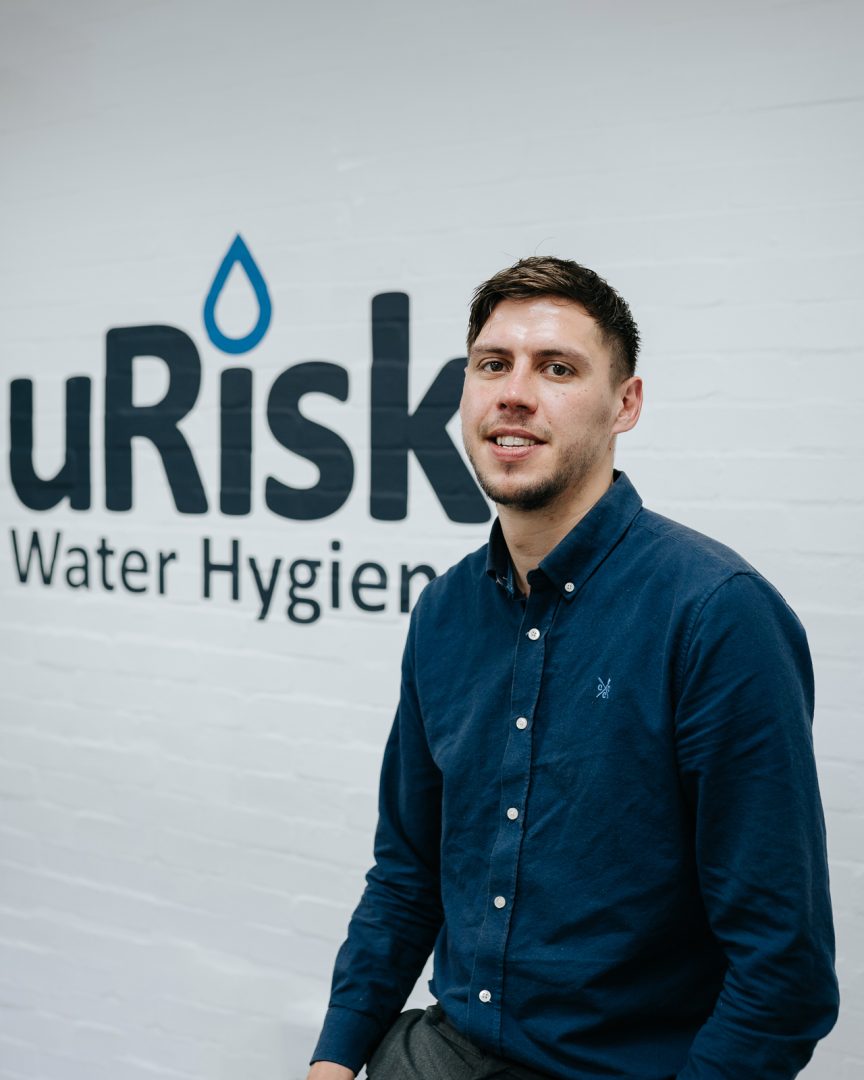
Callum
Customer Service
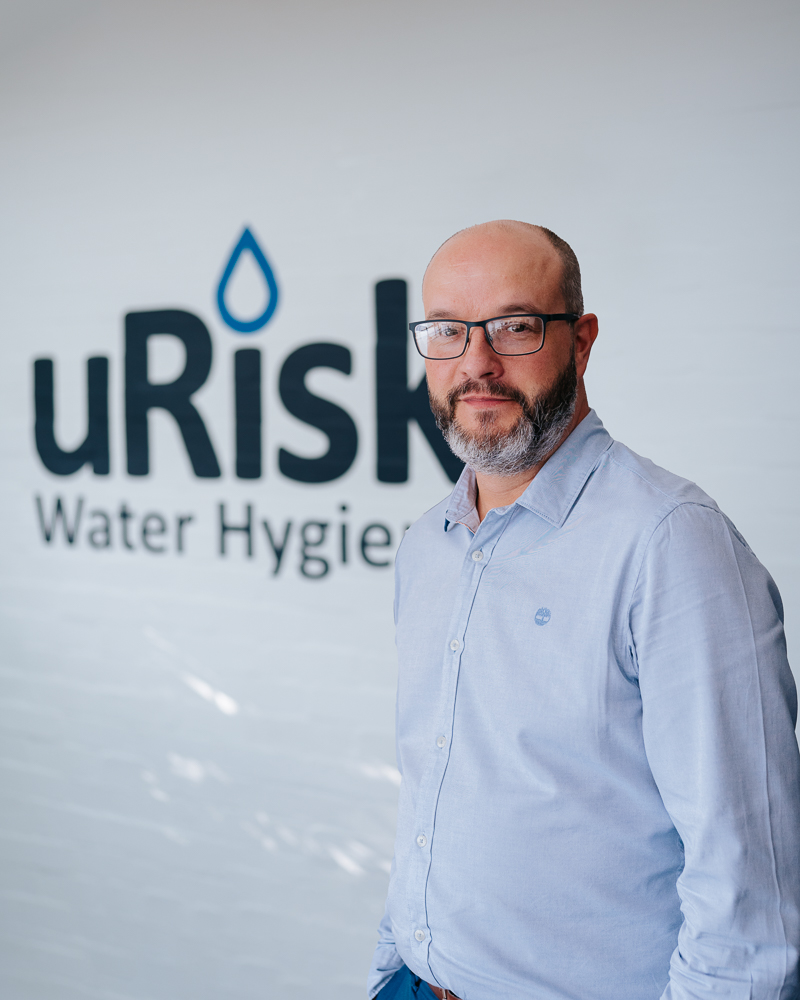
Neil
Coordinator
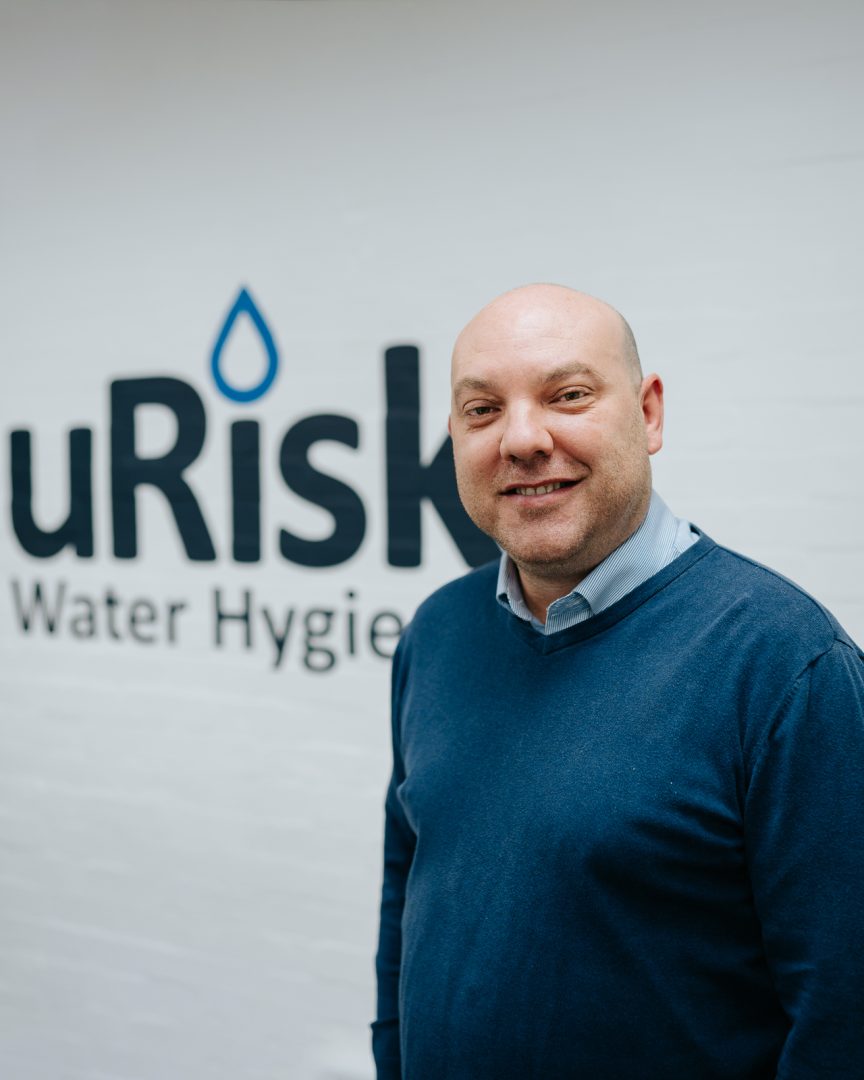
Stephen
Quality Control
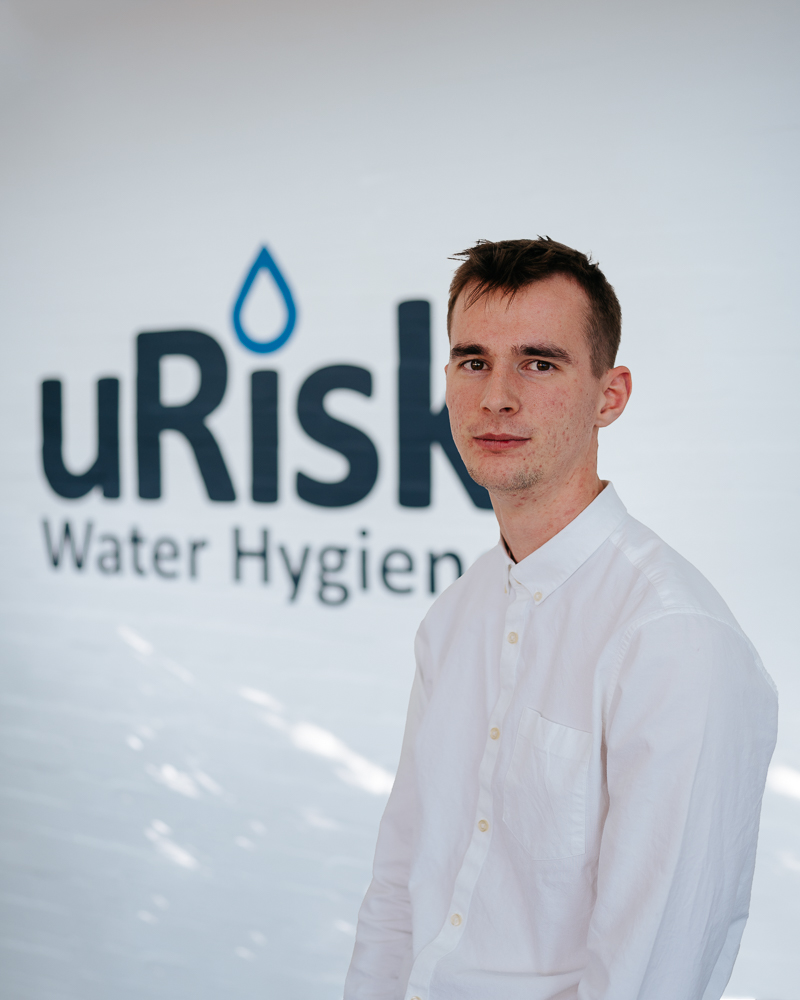
Shaun
Support
Why choose uRisk?
Over 25 years of water hygiene and legionella control experience.
Friendly and simple advice by phone, email & online at your convenience.
All staff are trained water hygiene consultants and engineers.
With engineers located all across the UK, we’re never too far away.
Our labs are UKAS approved providing you with quality assurance.
Your one stop shop for Legionella control, no need to go elsewhere.

